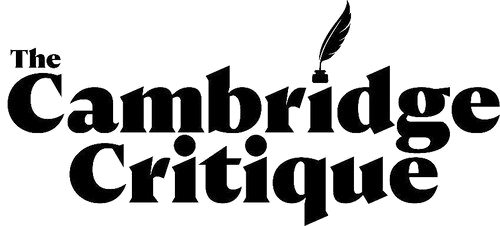CAMBRIDGE MARKET - THEN AND NOW
Derek Hughes and happy customer
The Cambridge Market marches on. In these days of shutdown it is more than a resource – it represents what Cambridge is all about. Before it emerged as a centre of learning (and remember that for centuries the Colleges were Monasteries and Convents which provided the hospitals and hospices for the town) it was a trading centre.
Alison Taylor, archaeologist, or rather the -Cambridgeshire County archeologist of note, can go right back to the beginnings. In early times (days of yore -as Rachel in Friends would say) it was weirdly enough Fen Ditton where all the action happened. Hard to imagine it today as a bustling port but in early times it was a hub of trade, even those great ancient seafarers, the Phoenicians took time off from battling with the upstart Romans, to skull down the Cam and exchange their exotic produce for – slaves.
In Anglo Saxon times the markets began to establish on places like Stourbridge Common, then a massive area (street names like Garlic Row mark the spot where traders sold livestock, vegetables tools of the trade and if ribald medieval sources are true – each other) and the Fair there was famous throughout Europe, getting a mention in ballads of the day.
Midsummer Common was another centre and as the action moved west to what we know as Cambridge, the Cambridge market was the epicentre of food selling. Easy to see why. It lay in the centre of an immense area of food production. It still does. Vegetables from the Fens have travelled in single figures to get there and there were trading routes from there, and beyond to the sea, right down the Cam.
The Fitzwilliam Museum’s brilliant home grown exhibition on Food Fasting and Feasting (All paintings taken from their own vaults) features a 17th century Cambridge market scene that looks eerily (minus the Guildhall) familiar. In the Corona Crisis other markets have shut up shop. Cambridge’s strong souls keep going. And without the fast food element, a visit is a way of re-playing the decades before it was quite so noodle-centred. The genial greengrocers are in full swing – a sensible distance between you and them (the stall itself is two metres deep) Mr. Gawthrop, a local Cottenham butcher who sold healthy, home-reared beef and lamb all through the BSE crisis, then rife everywhere else – his farm was uncontaminated- is a solid presence Wednesday and Saturday ( he takes orders at his shop base) and the recently arrived Fishman, Lee, of Crystal Waters is in full swing in the latter part of the week, but takes orders with card payment and his sturdy lad delivers to outside your door ( with a warning knock). The ever-gracious Mrs. Harvey is still in plant production as I write (not to mention home grown vegetables) but the star turn of the market Mr. Derek Hughes is the true stalwart in a close field. It is a 2 a.m. start for him to pick up his amazing bread and he is still there “It’s what keeps me going ‘ he says resolutely. But there is no visit to his stall that doesn’t include a good laugh, so aside from the heavenly sough dough , Scottish good humour is in plentiful supply. Cambridge market in a crisis is well worth a visit, it’s quiet wholesome, queue free and full of great stallholders who are just doing what they’ve done since Anglo Saxon times and beyond- trading.







